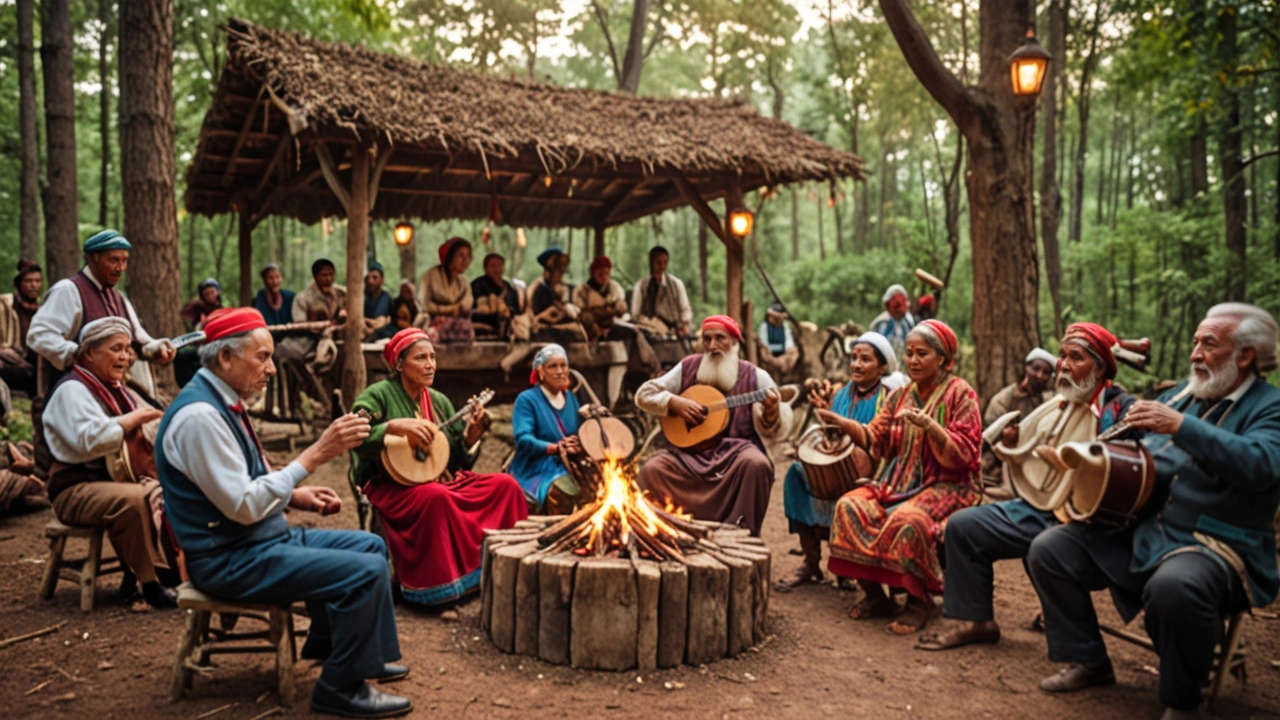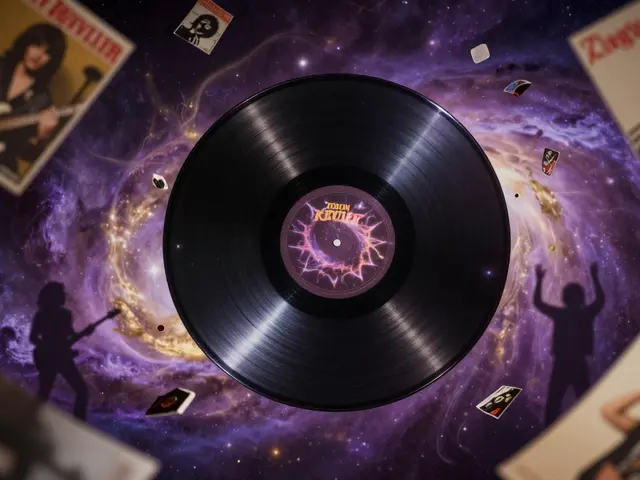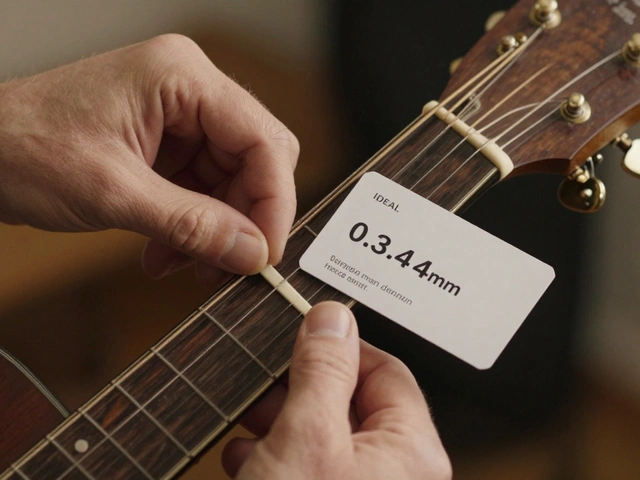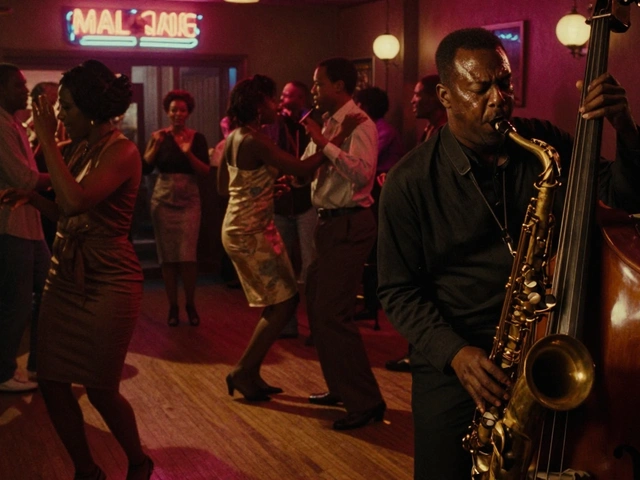Folk music is the heartbeat of cultures from all corners of the globe. This genre, deeply rooted in tradition, tells the stories of communities, their struggles, celebrations, and everyday life. It's the kind of music that feels familiar, even if you've never heard it before.
If you take a closer look, folk music reveals an astonishing variety of instruments, rhythms, and melodies. Each region, from the rolling hills of Appalachia to the steppes of Mongolia, has its own unique take on this timeless form of expression.
In our modern world, folk music's influence can be seen everywhere, from contemporary pop songs to indie acoustic performances. The authenticity and raw emotion embedded in folk have a way of resonating with people across ages and backgrounds.
Getting into folk music is a rewarding experience. Start by exploring local festivals, listening to classic recordings, or even picking up a traditional instrument. The deeper you dive, the more you'll find to love about this rich and varied genre.
- Origins and Roots of Folk Music
- Regional Variations and Styles
- Influence of Folk Music on Modern Genres
- How to Appreciate and Enjoy Folk Music Today
Origins and Roots of Folk Music
Folk music's roots run deep, intertwining with the very history of humanity. Long before recorded history, communities used song and music to pass down stories, traditions, and knowledge. Its foundation is in the oral tradition, where tales were sung to ensure they were remembered. This method of storytelling was universal, seen from the early Celtic bards to the African griots. These traveling poets and musicians were the keepers of history, ensuring that the legacies of their people survived through generations.
In many cultures, folk music evolved alongside significant historical events, reflecting changes and challenges. For instance, the sea shanties of sailors, which aided in synchronizing labor on ships, give us a view into maritime life during the age of sail. The American folk scene blossomed during the migration westward, with songs like "Oh! Susanna" becoming synonymous with the pioneering spirit. Likewise, in Eastern Europe, folk music was a vital part of both celebration and ritual, with songs marking everything from harvests to weddings.
One fascinating aspect of folk music is its tendency to sound both familiar and unique simultaneously. This duality stems from the blending of local influences with shared human experiences. For instance, the pentatonic scale, a five-note musical scale, is found in folk traditions across different cultures. Whether it's the bluegrass of Appalachia or the traditional music of China, the pentatonic scale creates a bridge that ties disparate societies together.
Ethnomusicologists, who study the cultural aspects of music, often point out that folk music instruments are typically made from available materials. This fact not only gives the music its distinctive sound but also tells us a lot about the region's culture and resources. Take the banjo, originally fashioned by African slaves in America from gourds and animal skins, it’s a symbol of cultural fusion and resilience. Similarly, the didgeridoo, used by Australian Aboriginal people, crafted from naturally hollowed-out eucalyptus wood, connects deeply to their landscape and traditions.
The intrinsic worth of folk songs often lies in their lyrics. These songs are treasure troves of cultural values, customs, and collective memories. Lyrics in folk music are not stilted or polished; they are raw and real, depicting the joys and hardships of everyday life. For example, the Irish folk ballad “The Fields of Athenry” poignantly recounts the story of a man imprisoned for stealing food during the Great Famine, reflecting a dark chapter in Irish history.
A quote from Alan Lomax, an American field collector of folk music, captures this sentiment beautifully:
“The essence of America’s folk music is its unperfected, homemade quality, which gives it charm and authenticity.”This homemade quality is what allows folk music to remain so evocative across time and space.
Folk music continues to evolve, adapting to contemporary issues while retaining its historic essence. It is this adaptability that ensures its longevity. The global folk music movement, seen in festivals and gatherings worldwide, shows the enduring power of this genre. Whether it's a young musician learning an old tune or a seasoned performer adding modern twists, the spirit of folk music is alive and well, continuously weaving the threads of the past with the present.
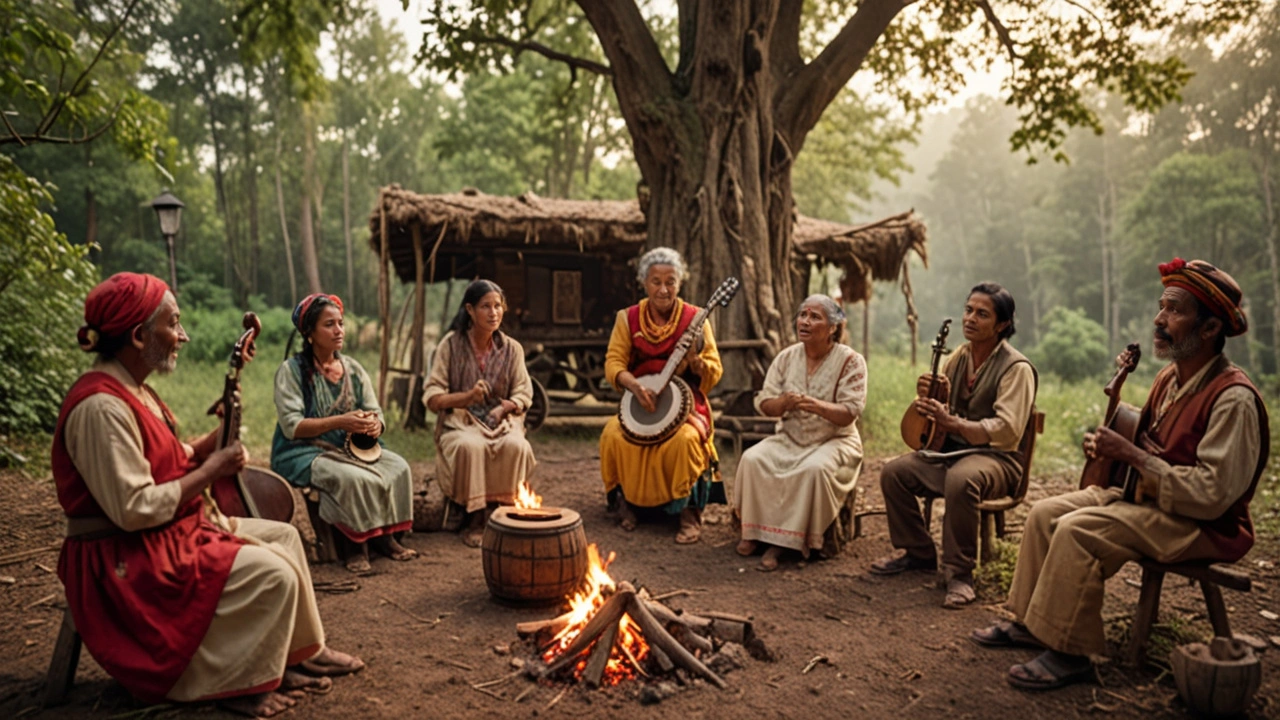
Regional Variations and Styles
Folk music is like a well-traveled storyteller, picking up tales and tunes from every place it visits. One striking feature is how it changes and adapts to different regions. Each area has its own unique style, built from its history, geography, and the people's ways of life. For example, the Celtic folk music of Ireland is renowned for its spirited jigs and reels, characterized by the lively sounds of fiddles, tin whistles, and bodhráns. These upbeat melodies often accompanied traditional dances, turning gatherings into vibrant celebrations.
In contrast, American folk music, particularly in Appalachia, has a more pensive and narrative-driven quality. Songs passed down through generations tell stories of hardship, love, and life in the mountains. Instruments like the banjo, dulcimer, and harmonica provide a distinctive sound. Bluegrass, a sub-genre that emerged from this region, brought a faster pace and more complex instrumentation, blending in influences from jazz and blues.
Meanwhile, in the Mediterranean, Greek folk music offers captivating tunes played on the bouzouki and baglama. These instruments produce an almost hypnotic sound, accompanying lyrics that often explore themes of love and loss. The distinct rhythm and scale of the music reflect the region's rich cultural tapestry, influenced by centuries of interaction with neighboring cultures.
Asian Influences
In Asia, folk music presents an even more varied palette. In India, the rich tradition of folk music manifests in forms like Bhangra, Rabindra Sangeet, and Rajasthani folk. These styles incorporate an array of local instruments like the tabla, sitar, and dhol. Each region within India offers a different flavor, from the energetic beats of Punjabi Bhangra to the soulful melodies of Bengali songs. Japan's folk music, or min'yo, employs instruments like the shamisen and shakuhachi. These songs often carry deep historical significance, associated with ancient rituals and festivals.
Latin American Flavors
Closer to the equator, Latin American folk music is infused with the rhythms of life. Flamenco from Spain, with its passionate guitar playing and rhythmic clapping, is perhaps one of the most recognized forms. Crossing the Atlantic, Andean music from countries like Peru and Bolivia relies heavily on wind instruments like pan flutes and the charango, a small stringed instrument. These sounds are deeply intertwined with the indigenous cultures and traditions of the region. Mariachi, a vibrant and festive style from Mexico, features an ensemble of violins, guitars, and trumpets, often accompanied by heartfelt singing. The music forms an essential part of celebrations, from weddings to religious festivals.
While this overview touches on just a few examples, it underscores the incredible variety within folk music. Each style is a window into the heart and soul of the people who created it. By exploring these regional variations, we gain a deeper understanding of the world's diverse cultures and the universal language of music that connects us all.
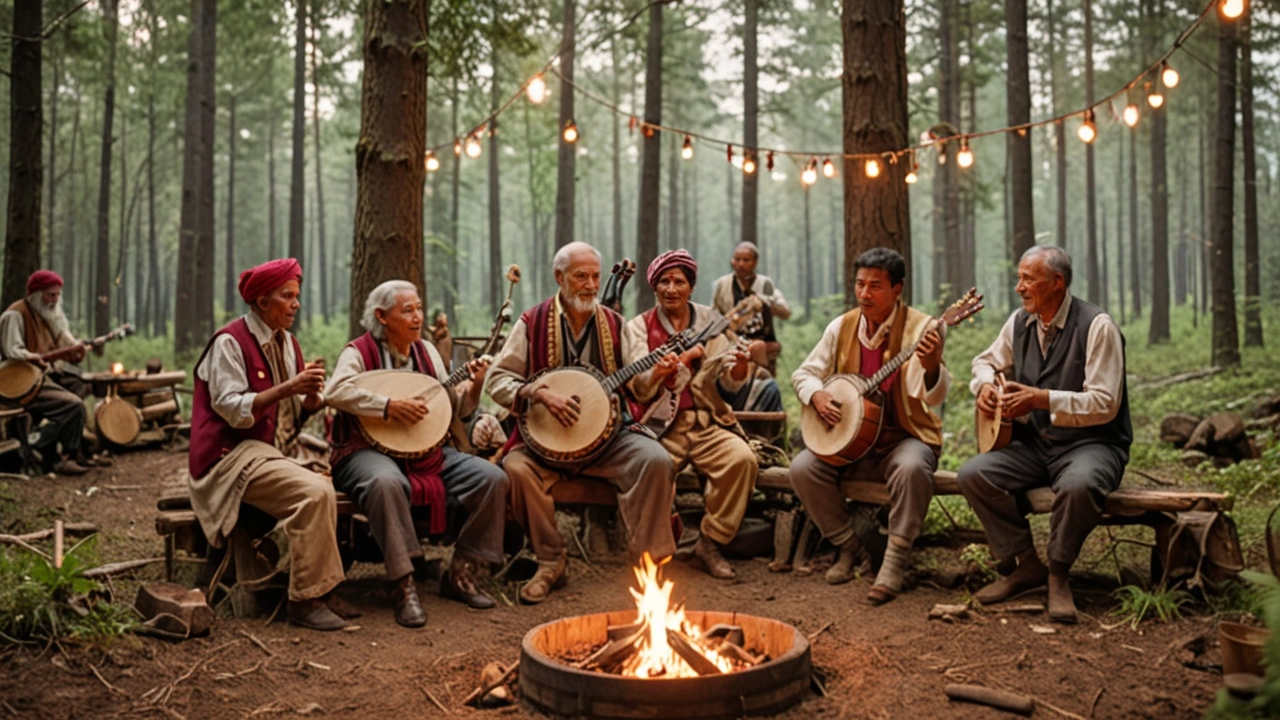
Influence of Folk Music on Modern Genres
It's fascinating to observe how deeply folk music has woven itself into the fabric of various modern music genres. While its roots may dig back centuries, its branches reach out widely, touching almost every contemporary style of music we enjoy today. A thorough look at the influence of folk music reveals how timeless and universal its appeal is.
One primary way folk music has influenced modern genres is through its storytelling nature. Artists like Bob Dylan, who started in the early 1960s, brought folk narratives into the mainstream, blending them with rock and roll in ways that had never been done before. This merging of folk and rock laid the groundwork for what would become the folk-rock movement, influencing bands such as The Byrds and Simon & Garfunkel. Dylan's influence is palpable, demonstrated by his numerous honorary degrees and prestigious awards, including the Nobel Prize in Literature.
Beyond storytelling, the instrumentation of folk music has left its mark. Instruments such as the banjo, fiddle, and accordion have found their way into genres like country, bluegrass, and indie folk. The banjo, for instance, originally an African instrument, became a staple in American bluegrass and folk thanks to musicians like Earl Scruggs. His three-finger picking style revolutionized the way the banjo was played and perceived.
“Folk music is not owned by anybody. It's something you pass around.” - Pete Seeger
Modern genres have also adopted the communal and inclusive nature of folk music. For example, the indie folk movement that emerged in the late 1990s and early 2000s, with bands like Fleet Foxes and Bon Iver, often features group harmonies and acoustic instruments that hark back to traditional folk practices. The authenticity and rawness of their music create an intimate listening experience, much like a folk gathering.
Even pop music has not escaped the folk influence. Many pop songs incorporate folk-style guitar strumming patterns and vocal harmonies. Artists like Ed Sheeran and Mumford & Sons have successfully blended folk elements with mainstream pop, creating hits that connect deeply with audiences worldwide. Sheeran’s “Shape of You” may be a pop sensation, but his use of acoustic guitar and lyrical storytelling are unmistakably folk-inspired.
Another notable area is the protest song, a cornerstone of folk music. From the 1960s civil rights anthems to today's tracks addressing political and social issues, artists have long used folk music’s powerful platform to voice dissent. Billie Eilish's “All the Good Girls Go to Hell” and Hozier's “Take Me to Church” are contemporary examples of songs that continue this tradition by addressing climate change and social inequalities, respectively.
Lastly, the cultural preservation mission of folk music has also resonated with modern artists. Many musicians from diverse backgrounds rekindle their indigenous or traditional folk practices to keep their cultural heritages alive. Artists like Rhiannon Giddens and the Carolina Chocolate Drops explore and celebrate African American folk traditions, shining a light on the origins and evolution of folk music within their culture.
It’s an ongoing lineage. Folk music’s essence—its storytelling, instrumentation, community spirit, protest roots, and cultural preservation—continues to inspire and shape the music we hear today. The genre's adaptability and authenticity ensure that it will always find a home in the heart of contemporary music, influencing it in subtle and profound ways.
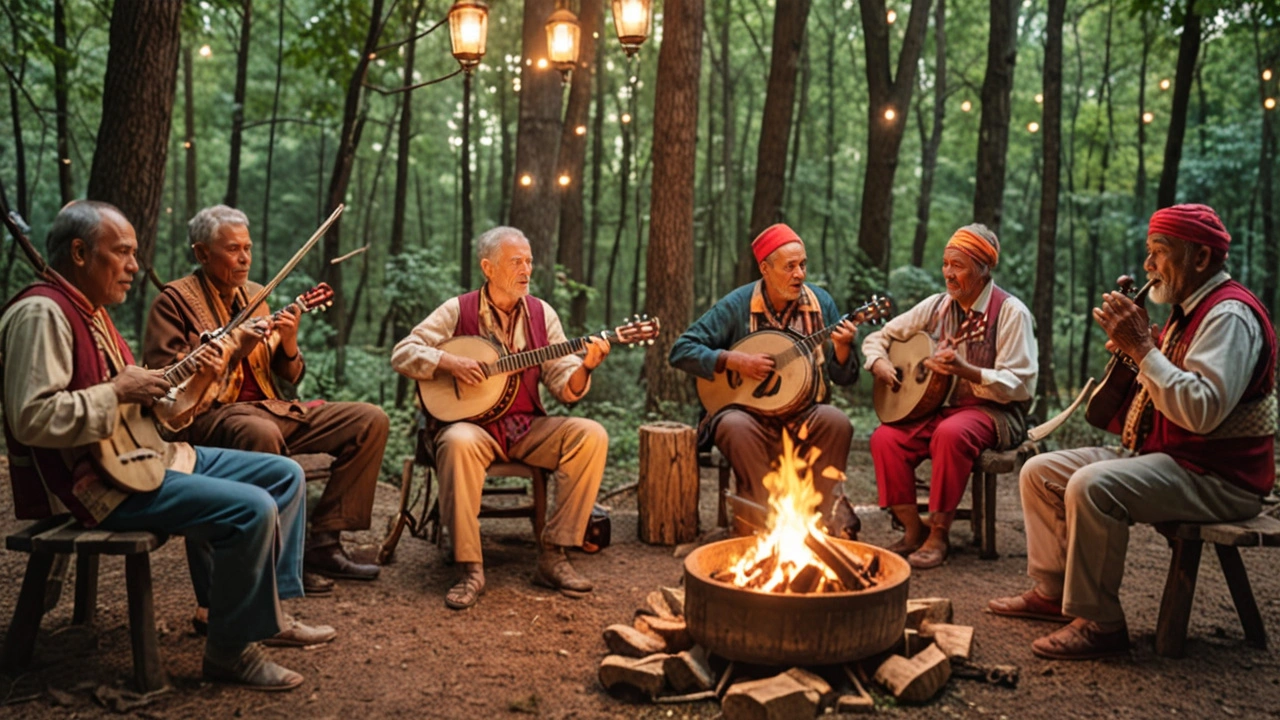
How to Appreciate and Enjoy Folk Music Today
Diving into the world of folk music can be an incredibly fulfilling journey. One of the most engaging ways to start is by attending local folk music festivals. These gatherings are more than just performances; they are a celebration of community, tradition, and heritage. Sitting in the open air, surrounded by music enthusiasts, you get to experience the raw, unfiltered essence of folk tunes. The interaction between performers and the audience creates a bond that makes the music even more special.
Exploring classic recordings is another excellent way to appreciate folk music. Albums by legendary artists such as Woody Guthrie, Lead Belly, and Joan Baez have left an indelible mark on the genre. Listening to these recordings helps you understand the roots and evolution of folk music. Each song is a story, capturing the spirit of its time and conveying emotions that are timeless.
Learning to play a traditional instrument can deepen your connection to folk music. Instruments like the banjo, fiddle, or mandolin carry the soul of folk music. Beginners might find it challenging, but the satisfaction of playing classic folk tunes is well worth the effort. Taking lessons from a local musician can provide a more personalized experience and give you a direct link to the traditions and techniques of folk music.
Music documentaries and films offer a visual and auditory feast for folk music enthusiasts. Documentaries such as “No Direction Home” directed by Martin Scorsese, provide rich insights into the lives of folk music legends and the cultural landscapes they inhabited. Watching these films can give you a broader perspective on how folk music has influenced and been influenced by societal changes over the years.
Joining folk music clubs or societies can also enhance your appreciation. These organizations often have regular meet-ups where members share music, stories, and sometimes, even meals. It's a fantastic way to immerse yourself in the culture and make new friends who share your passion for folk music. Many clubs also organize workshops and jam sessions, providing opportunities for both learning and performing.
Another fun way to engage with folk music is by exploring online streaming platforms. Many platforms have curated playlists dedicated to different sub-genres of folk music. This makes discovering new artists and styles incredibly convenient. Platforms like Spotify or Apple Music often feature playlists with both classic and contemporary folk artists, offering a well-rounded listening experience.
Make the most of social media. Following folk music artists, festivals, and enthusiasts can keep you updated on the latest happenings in the folk music world. Social media platforms are also excellent for discovering up-and-coming artists and getting recommendations from the community. Participating in online forums or groups can lead to enriching discussions and new friendships.
Reading books on folk music can provide historical context and deepen your understanding. Books like “Bound for Glory” by Woody Guthrie offer personal insights and anecdotes that bring the music to life. Academic works delve into the origins, societal impacts, and transformations of folk music over the years. Combining reading with listening can make for a thoroughly enriching experience.
If you're lucky enough, you can incorporate folk music into your daily life. Playing folk tunes in the background while you cook, work, or relax can help create a calm, soothing atmosphere. Singing folk songs with family or friends around a campfire or during gatherings can be both entertaining and bonding. The simplicity and authenticity of folk music make it perfect for any occasion.
Lastly, never underestimate the power of a live concert. Seeing folk musicians live, even in intimate settings like coffee shops or small theaters, can be a transformative experience. The passion and dedication of live performers bring out an energy that recordings can’t capture. It's a reminder of the communal roots of folk music, and a testament to its enduring charm.

